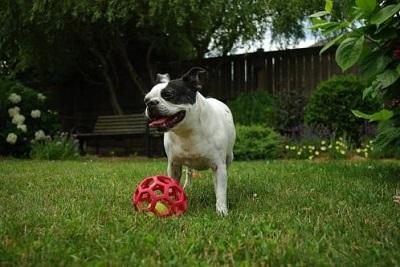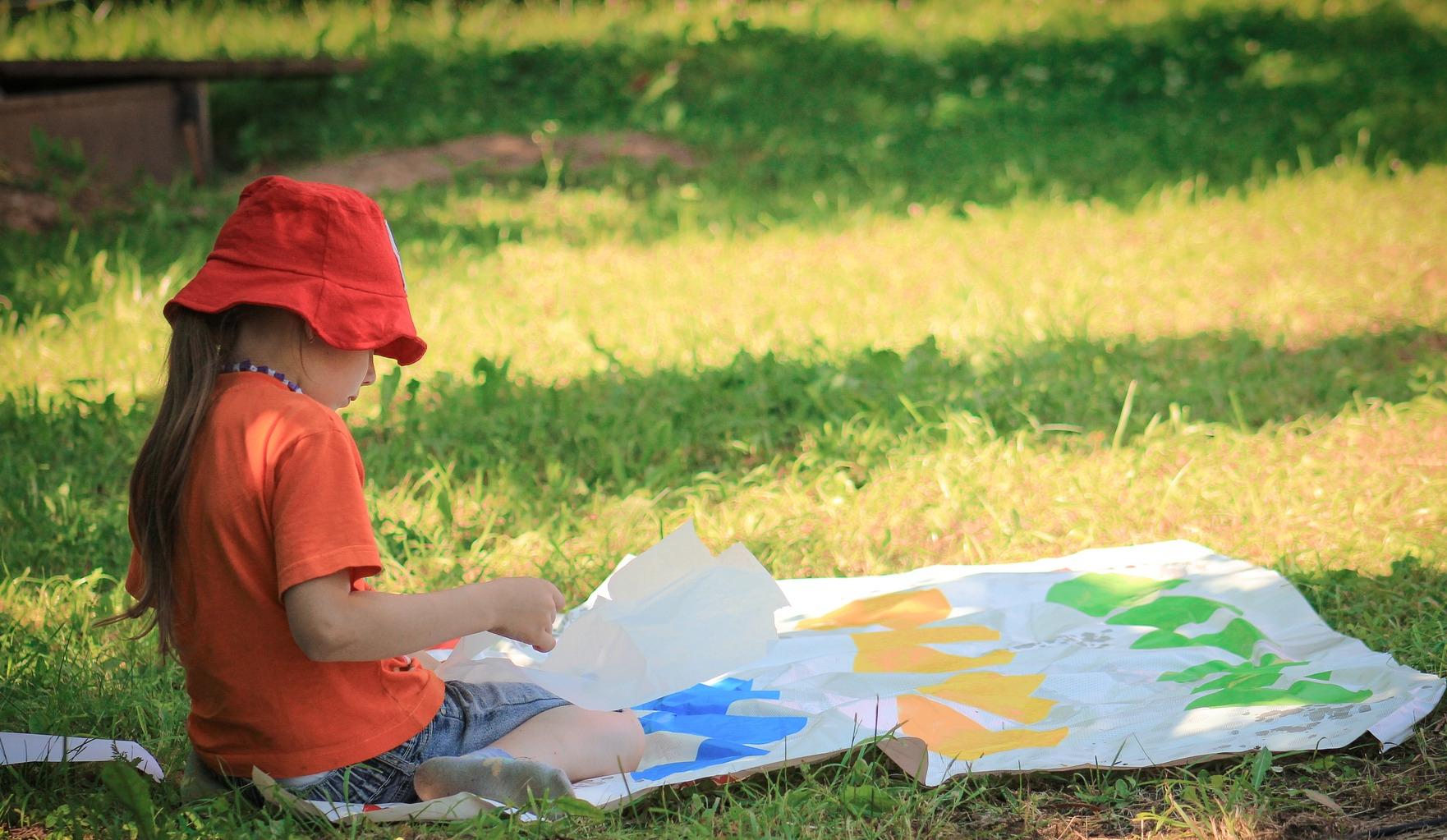It’s time to rethink our lawns and landscapes
A lush green lawn is often expected as part of the typical American home landscape. We receive questions from Maryland residents when their lawn contains weeds or brown spots, does not grow well, or just doesn’t look quite green enough. What leads to common lawn problems? Are expectations of a lush green lawn realistic?
If you are frustrated by a poor growing lawn, or you are looking for a different way to manage your landscape, there are alternatives.
Why is it difficult to grow a lawn in Maryland? We’re in a transition zone
Maryland is located in a climate transition zone which is not favorable for growing lawn grasses. The transition zone is a region of the United States where temperate and subtropical climates meet. Cool-season turfgrasses such turf-type tall fescue and Kentucky bluegrass are adapted to temperate climates whereas warm-season grasses like zoysiagrass grow best in subtropical regions. Both cool- and warm-season turfgrasses can grow in Maryland, but our state’s climate is not favorable for either group of grasses over the entire year. This makes it a constant challenge to try to maintain a healthy lawn.
Turfgrasses are not native to Maryland. The University of Maryland conducts research trials to evaluate turfgrass cultivars that will grow well in Maryland’s transition zone climate. The results are published annually in (PDF) TT-77 Recommended Turfgrass Cultivars. Turf-type tall fescue is a cool-season grass that is recommended for most areas of Maryland. It needs a minimum of 4-6 hours of sun daily and requires regular maintenance to remain healthy.

Image source: Iowa State University, Department of Horticulture
Expectations about lawns are high -- and often unrealistic
Does a home lawn have to look perfectly uniform, lush green, and weed-free? Community rules and expectations and powerful advertising for lawn care products suggest that it does. We may be influenced by the way our parents maintained a lawn or what our neighbors do. The pressure to conform to expectations about lawn care is often high. But maintaining a perfect-looking lawn, even using science-based recommendations, is often difficult to achieve. Why?
- Grass will not grow well in every situation. In addition to the challenge of being in a transition zone climate, some locations are simply unsuitable for a lawn. If all or part of your landscape is heavily shaded by trees, steeply sloped, or poorly drained, turfgrass will not be a good choice. Trying to grow a lawn where conditions are unsuitable often results in failure, wasted money, and frustration.
- Monoculture is unnatural and susceptible to problems. A monoculture refers to the cultivation of one species of crop in a given area. Single crops are more susceptible to diseases and pest problems than a diverse mixture of resilient species. In healthy ecosystems, biodiversity -- many plant species -- is the norm. Maintaining a lawn monoculture sets up a constant battle against nature’s tendencies, which leads to the next point.
- Weeds are normal and to be expected. Weeds are plants out of place. It is normal for plants to show up by seed dispersal, even in a healthy, well-maintained lawn. Billions of weed seeds reside in topsoil, blow in on breezes, and are carried by stormwater and animals to your landscape.
White clover (Trifolium repens) is commonly considered a lawn weed. This was not always the case. Prior to the 1950s, white clover was included in lawn seed mixes because of its ability to fix nitrogen and serve as a natural nitrogen source. Chemical herbicides created after World War II made it possible to selectively kill broadleaf plants in a lawn. Influential marketing-led people to believe that clover was “bad” and needed to be removed. Research has shown that nitrogen fixed by white clover is taken up by turfgrasses (Sincik, 2007) and clover also provides essential nectar and pollen for bees, whose populations are in decline.
Some other common lawn weeds like dandelions are beneficial for wildlife and some (dandelions, chickweed, and plantain) are edible plants.
- Mowing is necessary but can lead to problems if done incorrectly. Some people enjoy the look of a closely cut lawn, but low mowing is a major cause of lawn deterioration. Scalping a lawn -- cutting it too short and exposing bare soil -- is a major cause of a crabgrass infestation. Applying herbicide each spring to control crabgrass is not a good long-term solution.
The costs of maintaining a lawn
Lawn requires constant maintenance -- even if you choose organic lawn care. Soil testing, fertilization, mowing, aeration, and overseeding are all essential practices that must be done on a regular basis to maintain a healthy lawn. This maintenance comes with costs.
Chemical pesticides – herbicides, insecticides, and fungicides – are poisons that affect human health in a variety of ways, from skin irritation to endocrine system effects (Source: CDC). Dogs experience similar reactions as humans to pesticide exposures. Lawn herbicides have been detected in the urine of dogs (Source: Knapp DW, et al.). Pesticides are found in streams and groundwater where they pose harm to aquatic life (Source: USGS). And pesticides applied to lawns may be tracked inside homes by people and pets where they can persist, resulting in additional exposure.

- Highly managed lawns provide little to no floral resources to feed bees and other beneficial insects. With some 1.3 million acres devoted to lawns in Maryland, this has broader consequences. Bees are essential for pollinating many food crops. Other insects provide essential ecosystem services too -- natural predators for pest control, food for birds and other wildlife, as well as public enjoyment (butterflies, fireflies). Lawns devoid of plant diversity do not support healthy populations of beneficial insects.
- Watering lawns is a wasteful use of a limited natural resource. Nationwide, outdoor water use accounts for 30 percent of household use. (Source: U.S. EPA)
- Traditional lawn care contributes to carbon emissions and climate change. Gas-powered equipment such as mowers, leaf blowers, and trimmers produce up to 5% of air pollution in the U.S. More than 17 million gallons of gas are spilled each year during the refueling of lawn and garden equipment. (Source: U.S. EPA) Synthetic nitrogen fertilizers require a high amount of energy to produce and distribute, adding further to carbon emissions. (Source: Union of Concerned Scientists).
Times are changing… and so are perspectives on home landscapes
Climate change and more extreme, unpredictable weather patterns are making it even more challenging to grow lawns in Maryland. Unprecedented rainfall in 2018 disrupted the timing and efficacy of herbicides, shortened the window of opportunity or overseeding, and left some lawn areas inundated.
Our environment is changing and our lifestyles are changing. It’s time to rethink the traditional lawn.
While deliberately managed lawns can help to prevent soil erosion, store carbon, and provide a desirable aesthetic, the maintenance of a lawn -- especially large areas of it -- may not be feasible or desirable for everyone. If your lawn is not growing well or you simply are looking for a different approach to your landscape, other options are available.
Think differently about lawns and landscapes.
How much lawn is enough? Think about how much of your yard you actually use. Consider maintaining a lawn where it is actively used for people and/or pets or to frame a garden area. Gradually transition the unused areas of your landscape to other purposes. Adding trees, a garden, or a variety of different groundcover plants can add value and beauty to your property as well as benefits for wildlife.
Accept that there will be weeds. Having some weeds in a lawn is acceptable and is to be expected. A low infestation of certain weeds, such as dandelions, can be hand-pulled or dug out. Even when weeds are controlled, new weed seeds can be blown in by the wind, transported by wildlife, or applied in low-quality seed mixes. Ignoring and mowing weeds is an acceptable strategy. Most home lawns naturally will include a low population of weeds and still be healthy and attractive. Many spring weeds such as clover and dandelions provide pollen and nectar for pollinators.
Not all insects in a lawn are harmful, and pesticides are rarely needed. Grubs are thought to be a common problem in lawns, but they do not seriously affect lawns consisting of turf-type tall fescue, the most common grass used in Maryland. Research shows that damage will occur when grub populations exceed 8-15 grubs per square foot on tall fescue lawns. Most lawns can suffer a 10-15% stand reduction without a substantial loss in quality. Reduce grub problems by limiting irrigation, since dry soil is less favorable to adult beetles laying eggs. Grub control products are unnecessary unless a sample shows that grubs are actually present at a high threshold and causing significant injury to the turf.
Lawn alternatives are available. Where lawn has become difficult or undesirable to maintain, consider taking the following approaches.
-
Lawn won’t grow under a tree? Plant groundcovers instead, or put a 2” layer of organic mulch down over the tree’s root zone. Leave fallen needles under pine trees. They provide an excellent natural mulch and gradually return nutrients to the soil.
Moss is growing in your lawn? Don’t try to fight it. Moss is an acceptable and suitable groundcover in some situations and has ecological and aesthetic value.
Want to help pollinators or birds? Replace a portion (or all) of your lawn with a garden consisting of native vegetation that provides food and shelter for wildlife. Incorporate a variety of flowering plants and structural diversity -- a mixture of groundcovers, shrubs, and trees.
-
Dealing with flooded or eroded areas? Conservation landscaping and rain gardens are some options to consider for stormwater management. Several Maryland Counties offer rebates or tax credit programs to offset the cost of converting turf to sustainable landscaping.
For more ideas, refer to our page about Lawn Alternatives.
By Christa Carignan, Certified Professional Horticulturist, University of Maryland Extension Home and Garden Information Center (HGIC), 2019. Reviewed and edited by Jon Traunfeld, HGIC Director, and Debra Ricigliano, Lead Horticulturist, HGIC.
